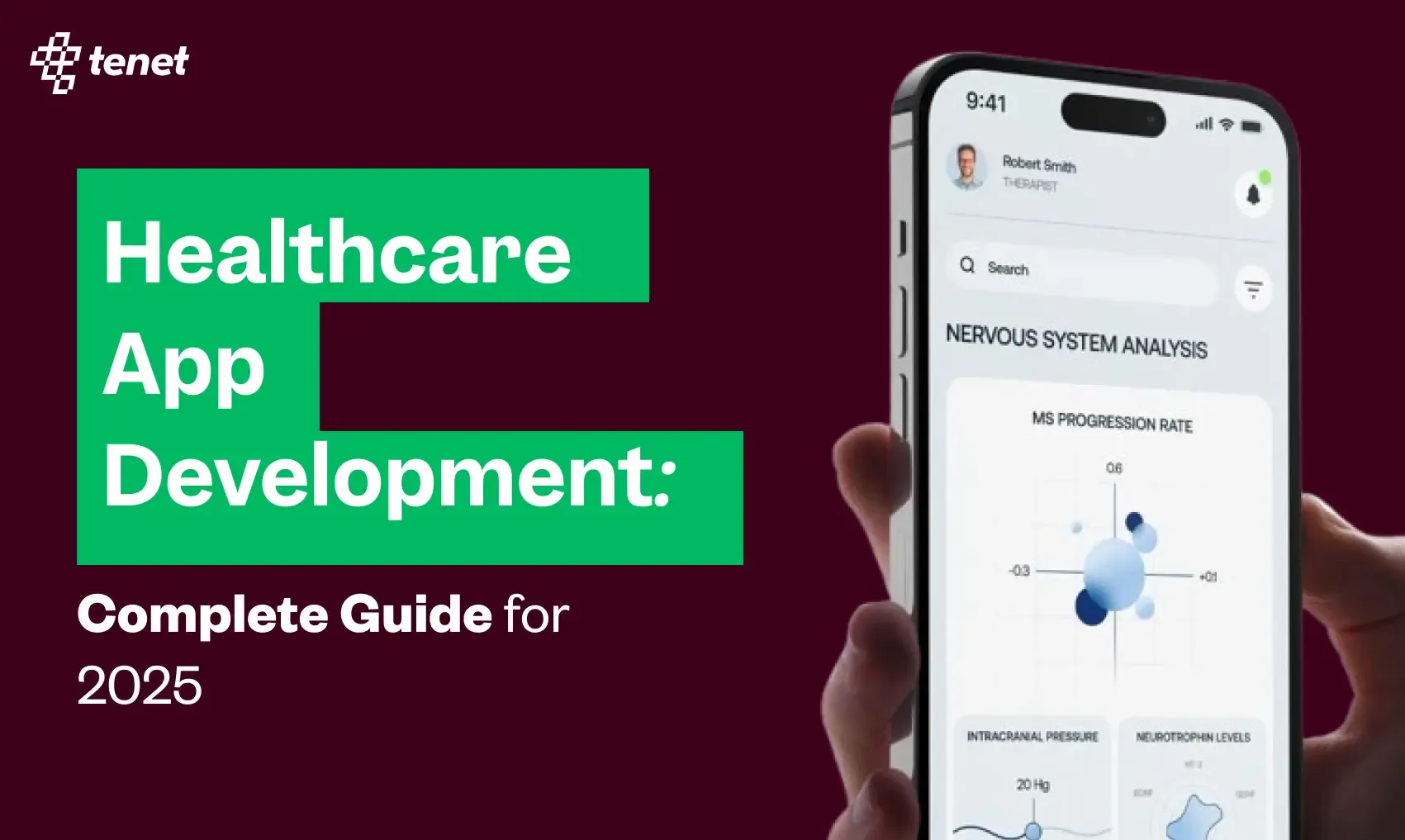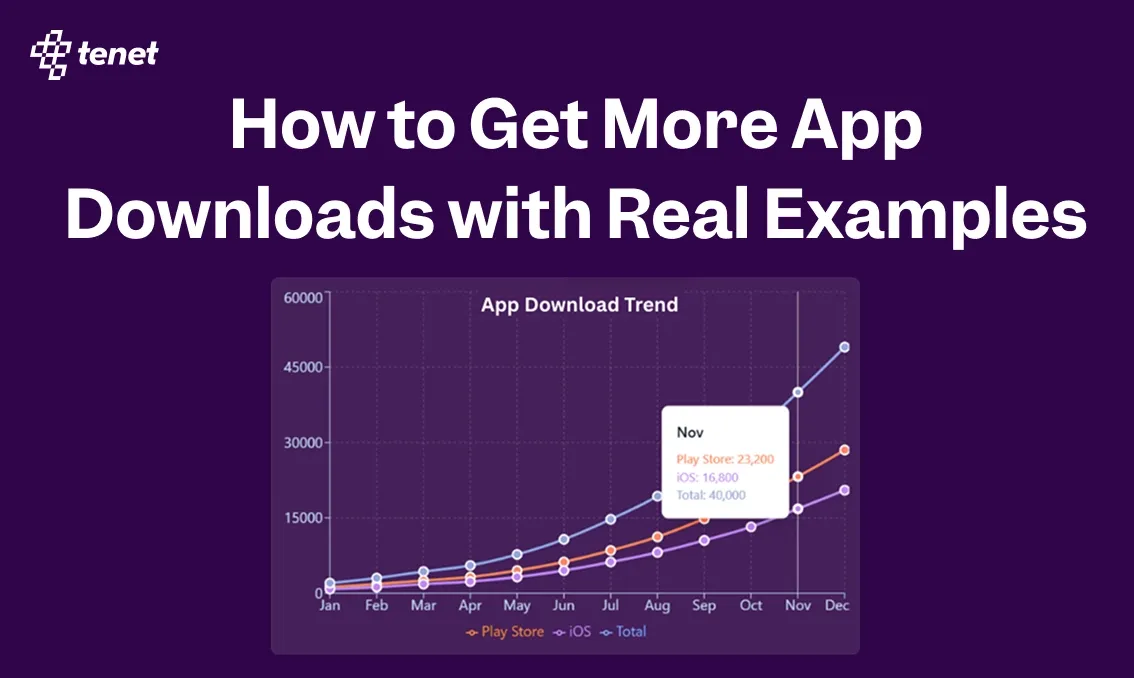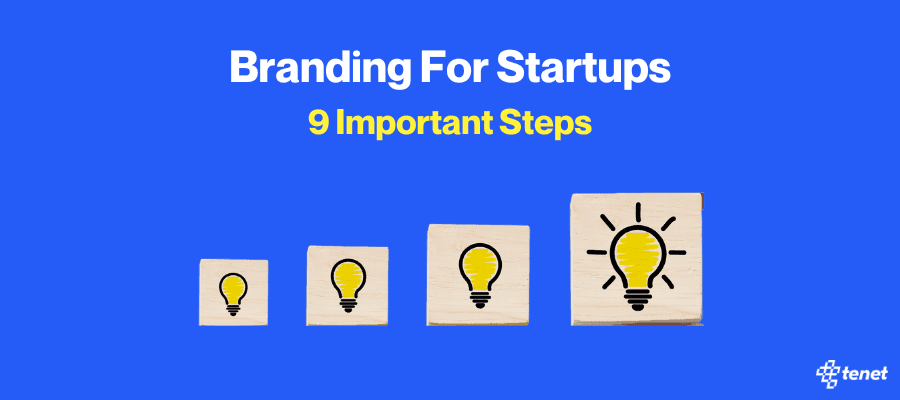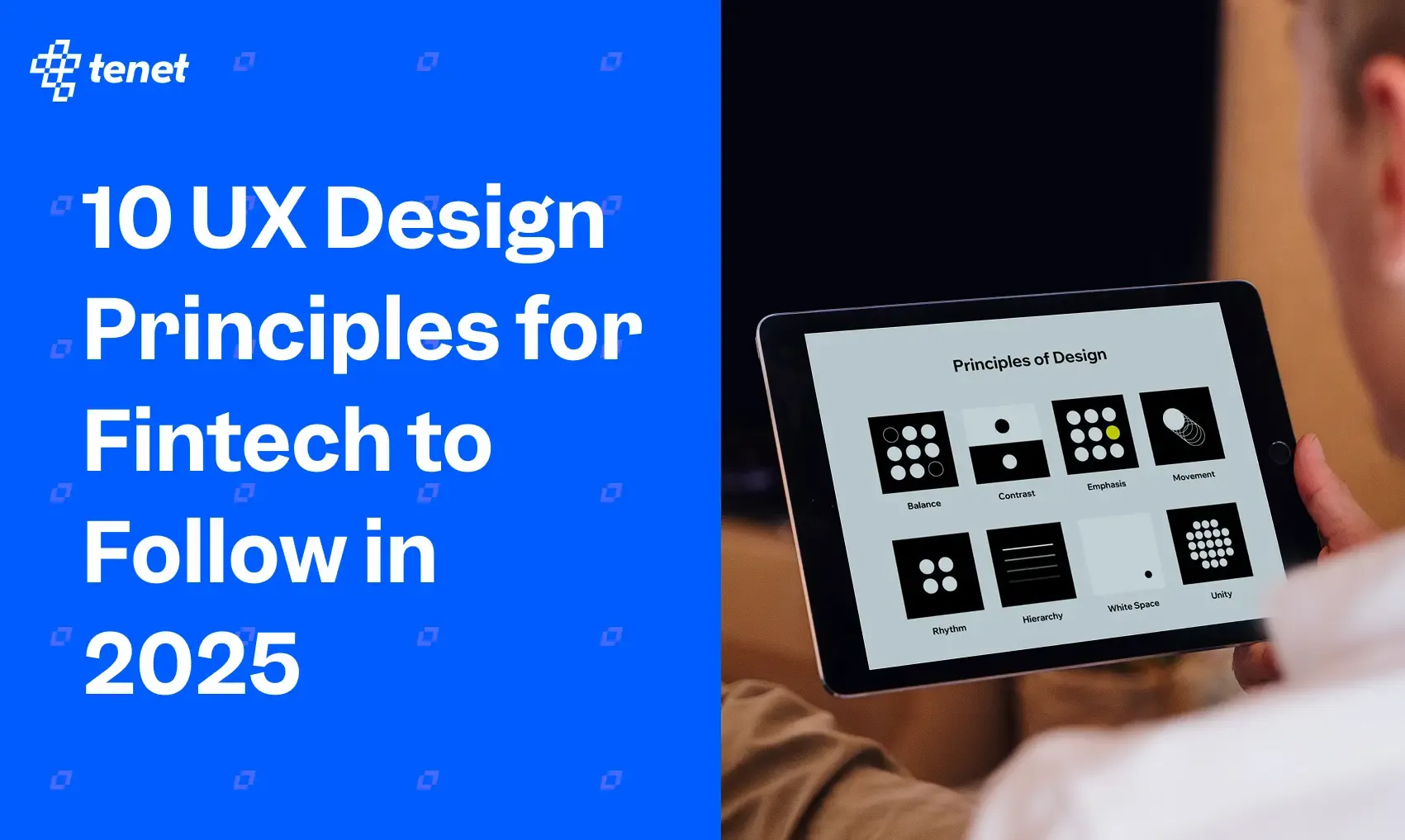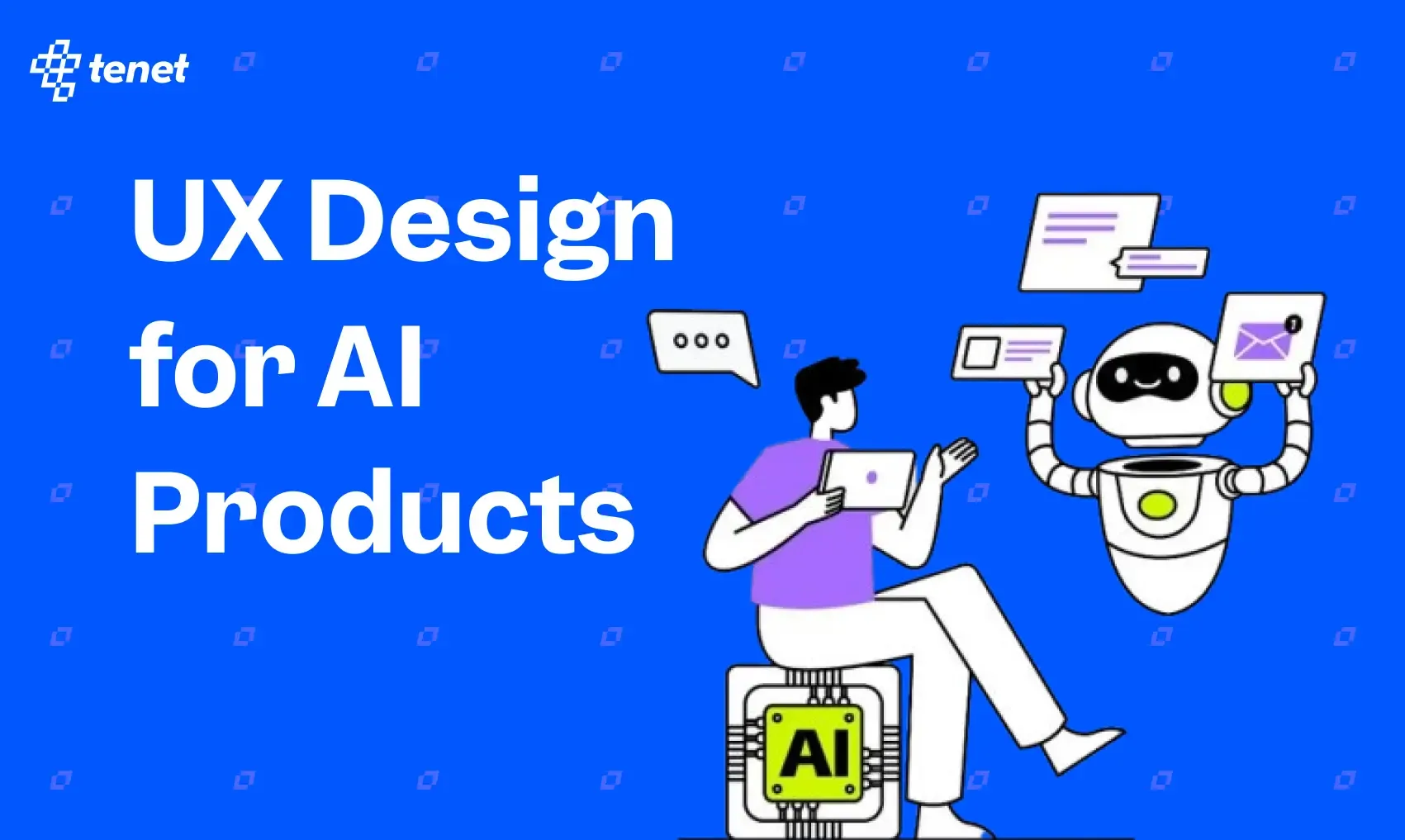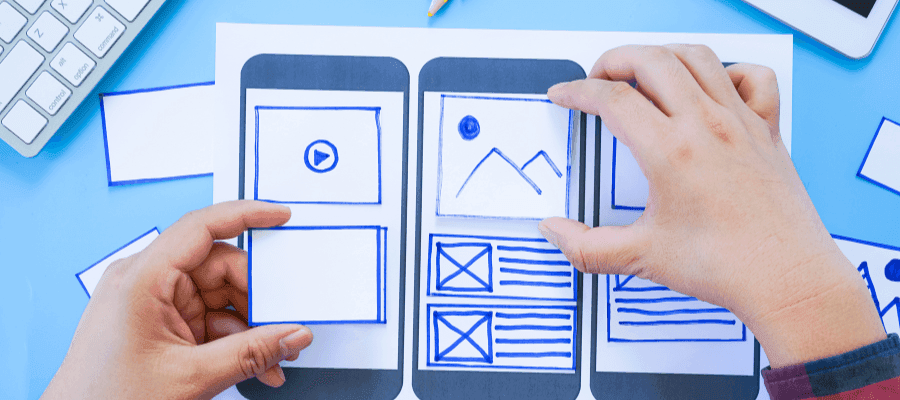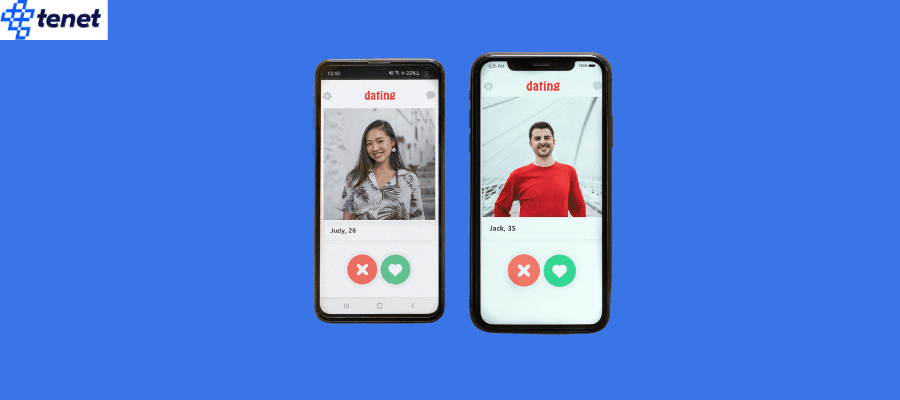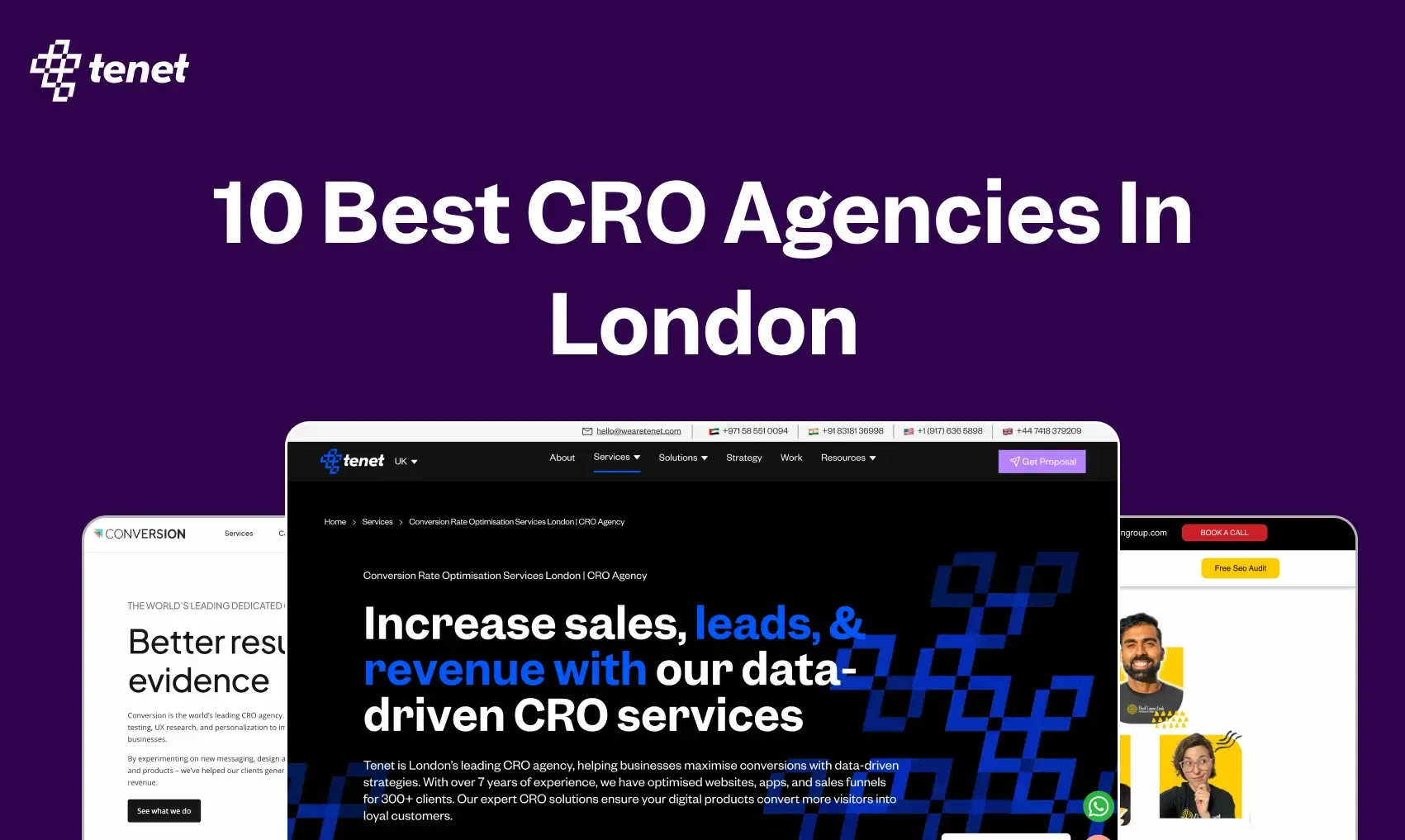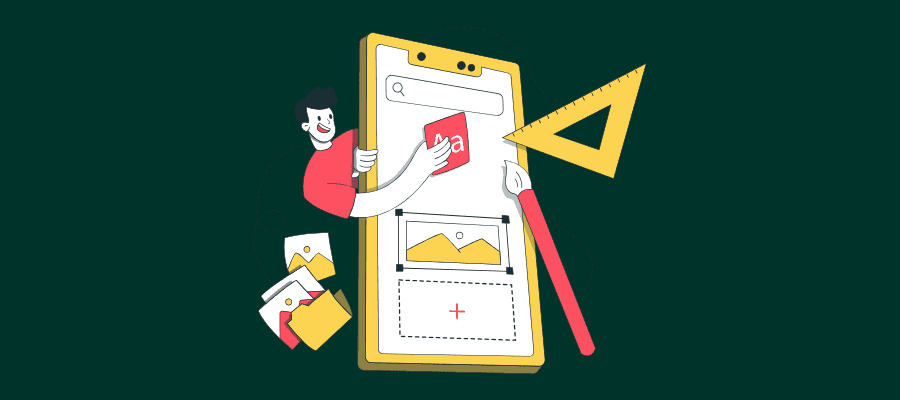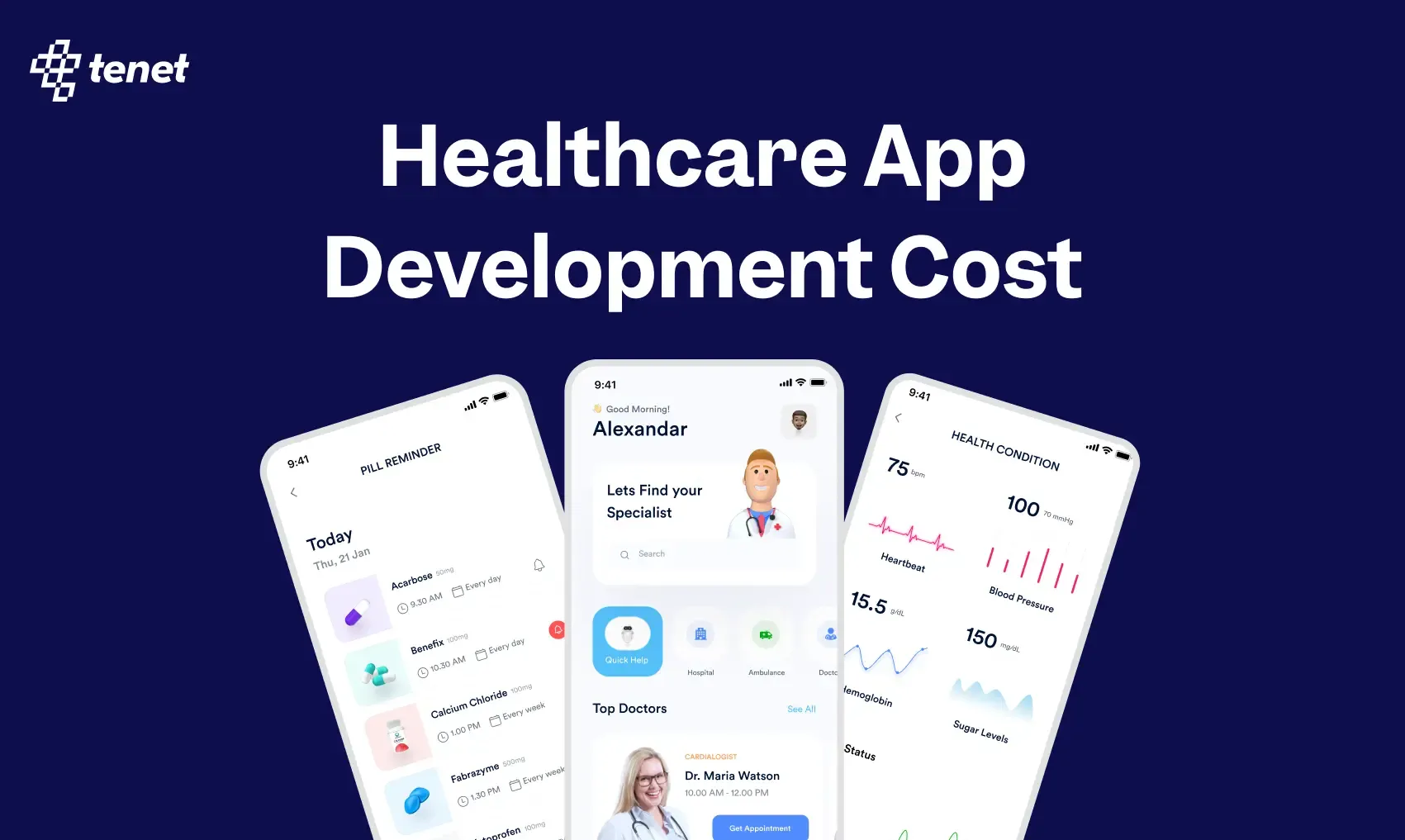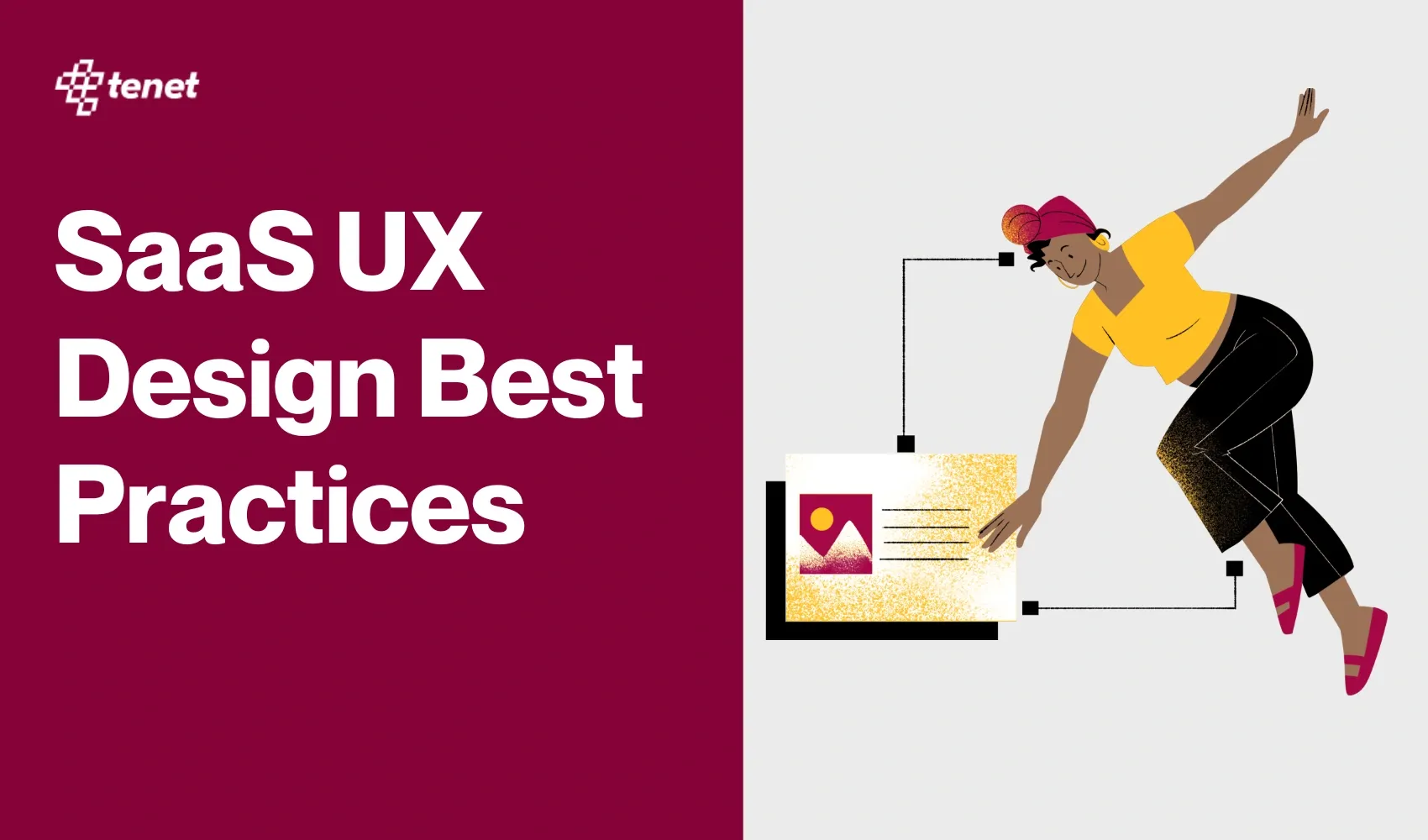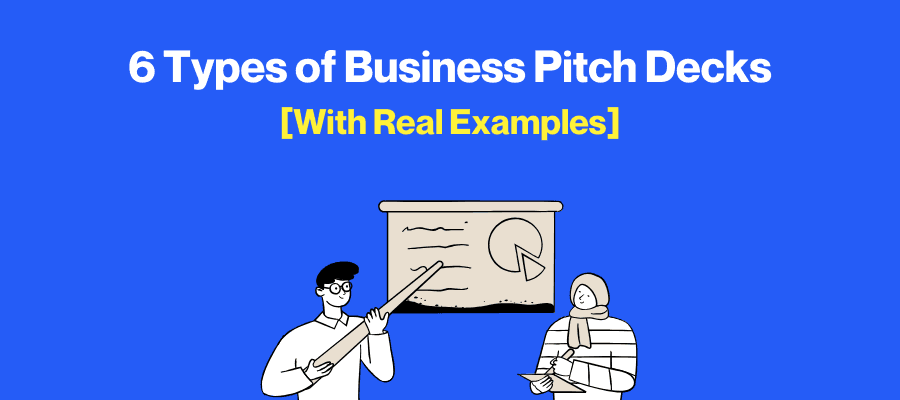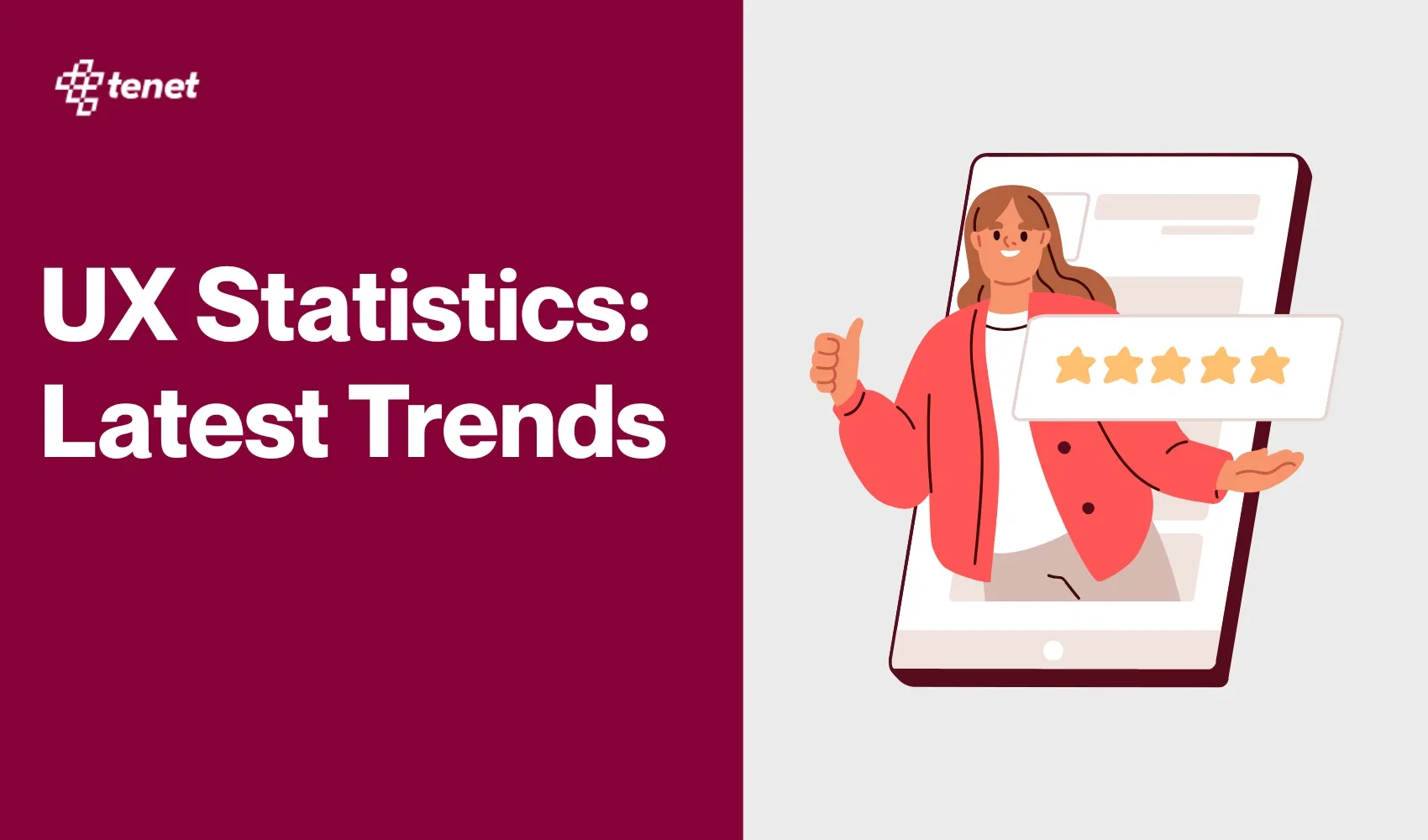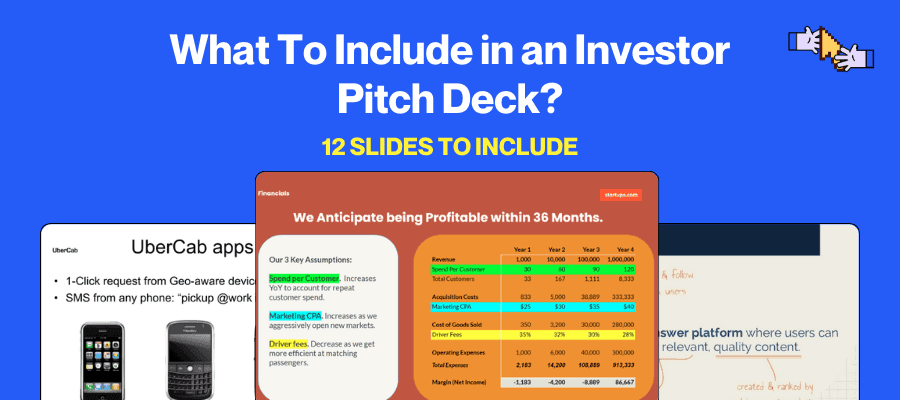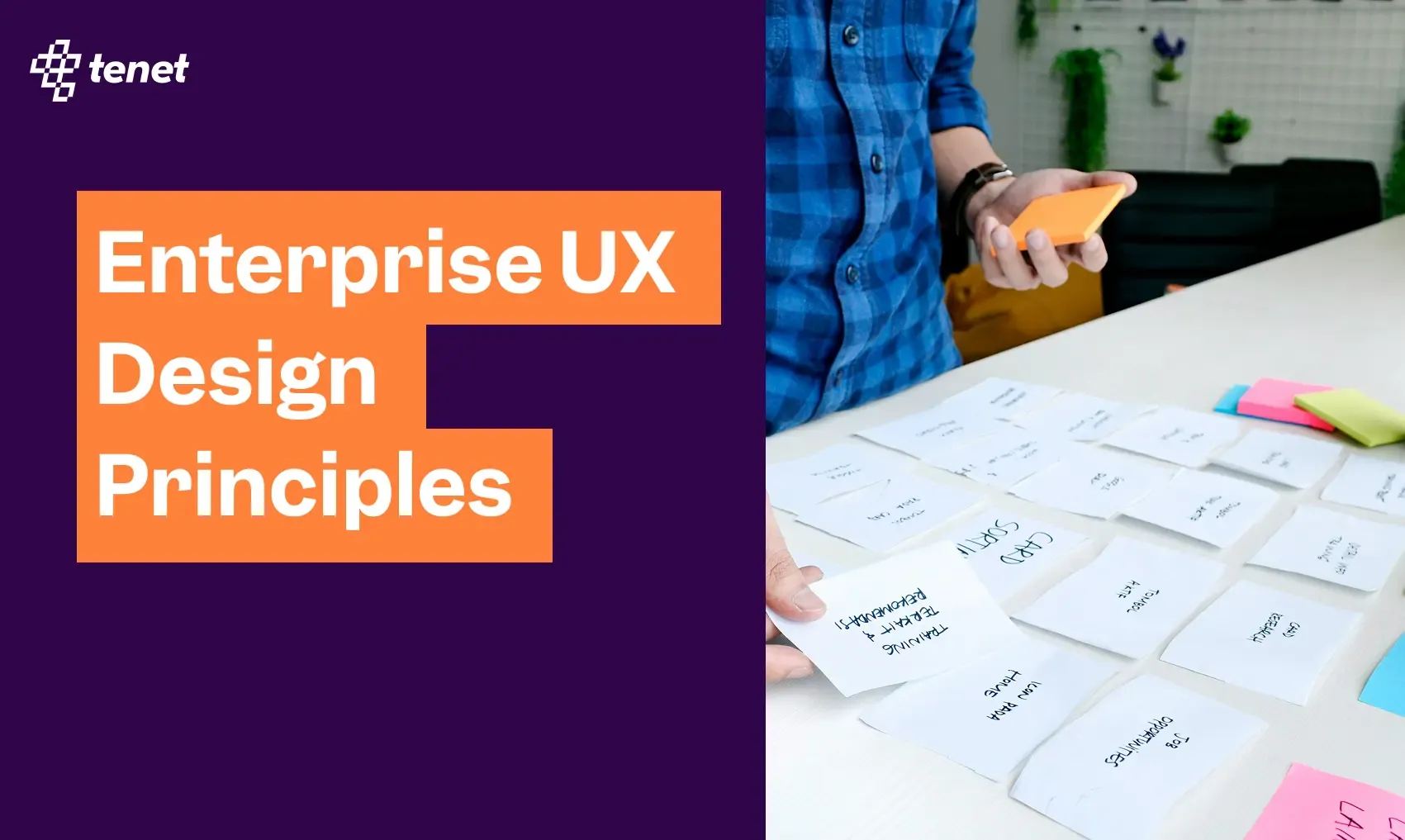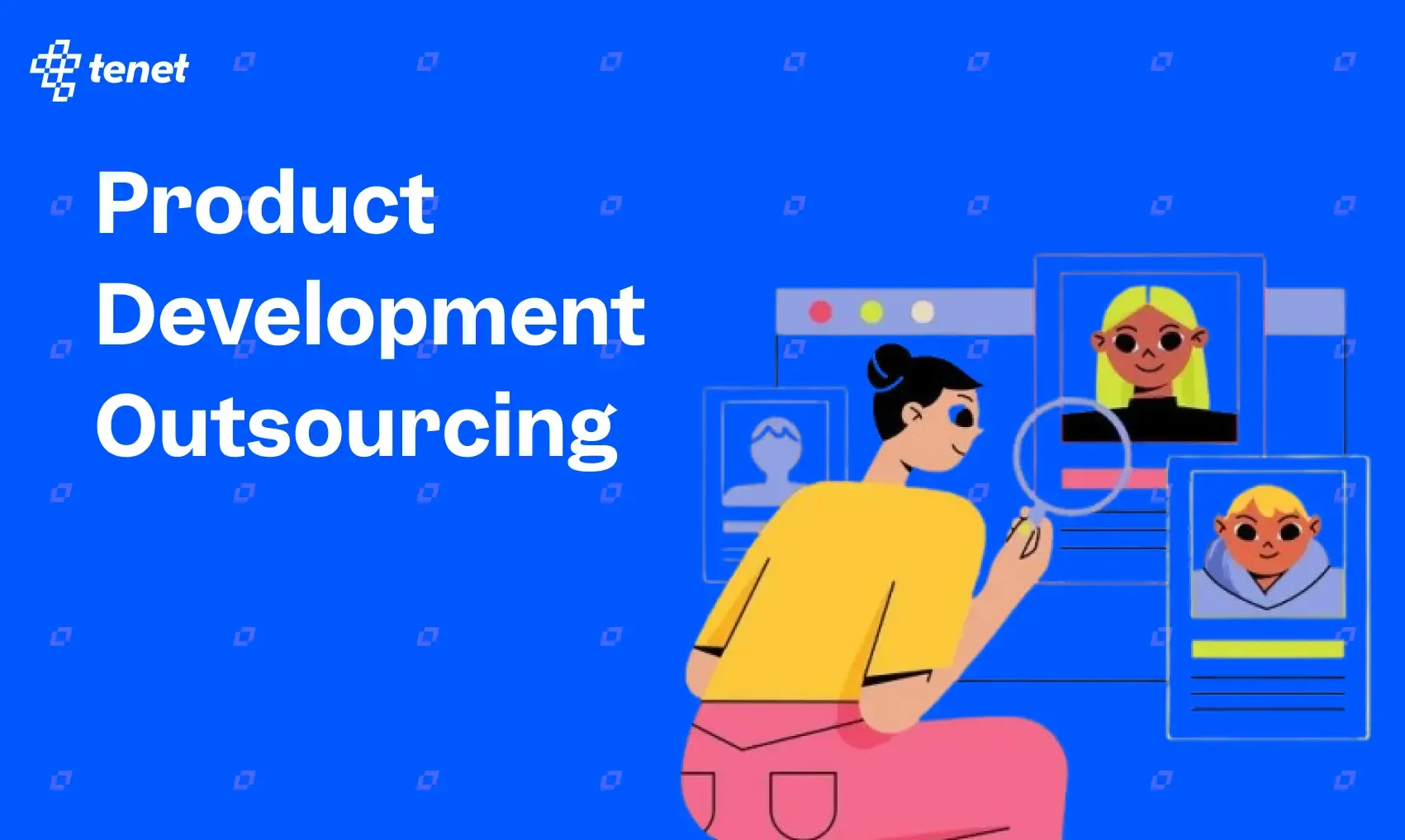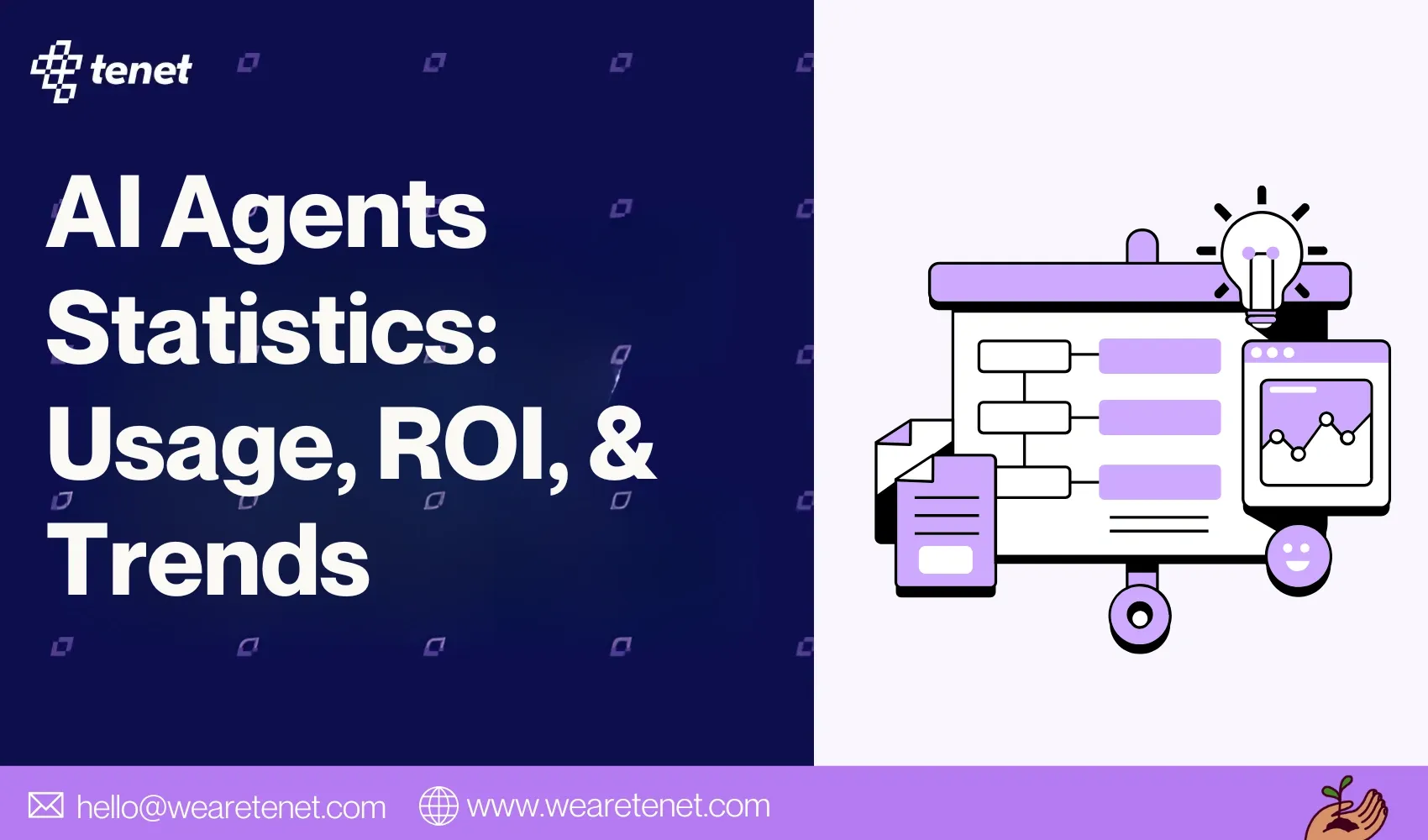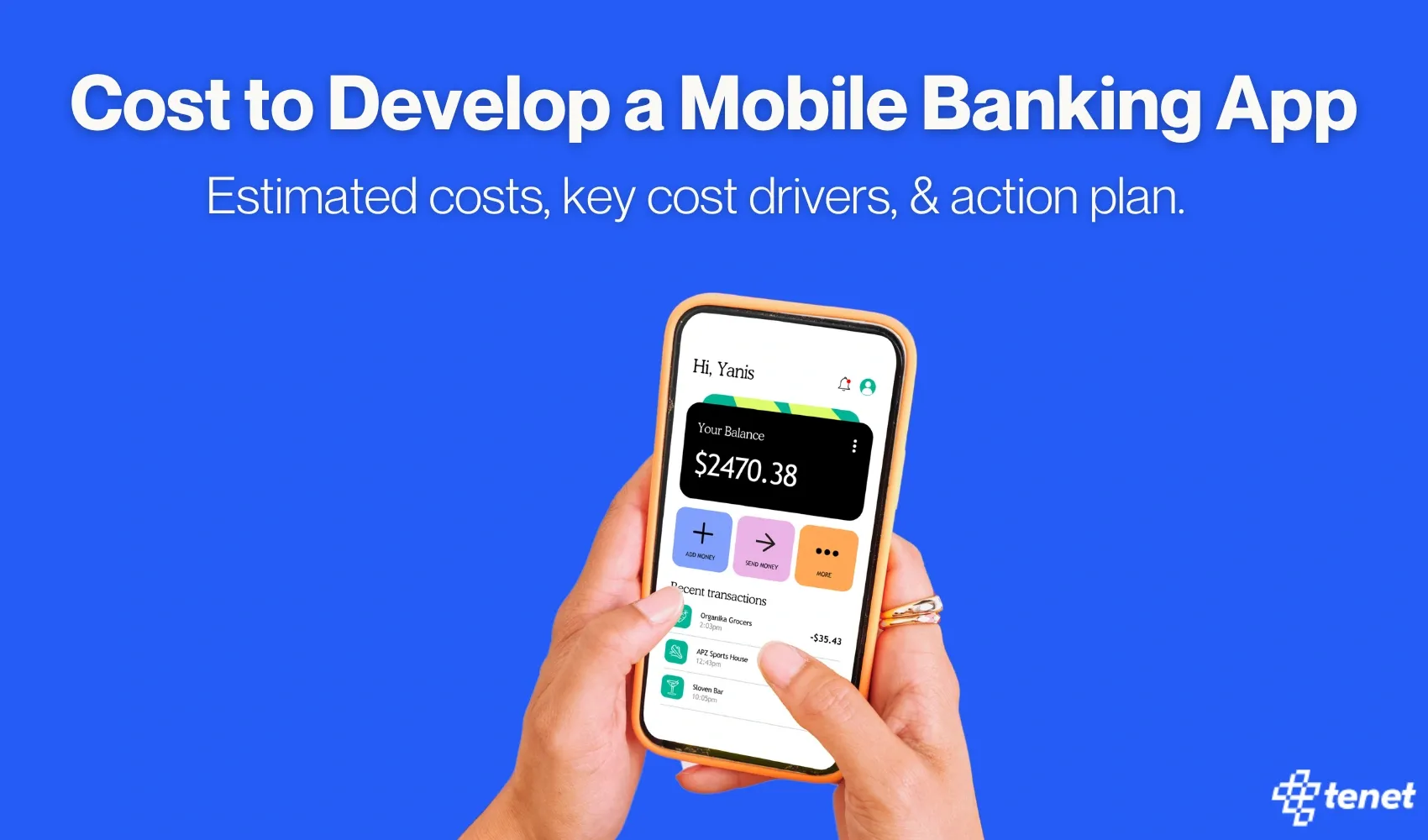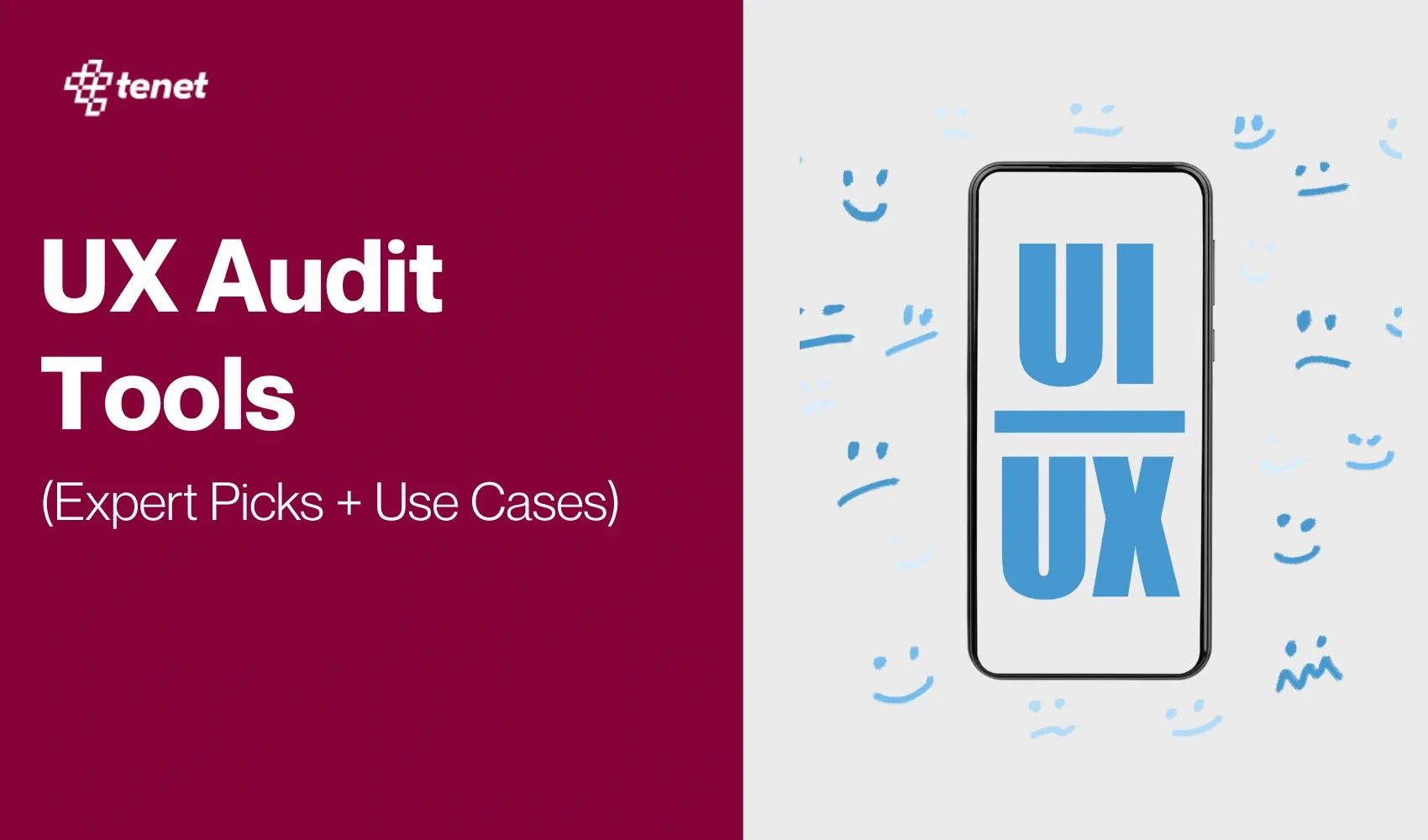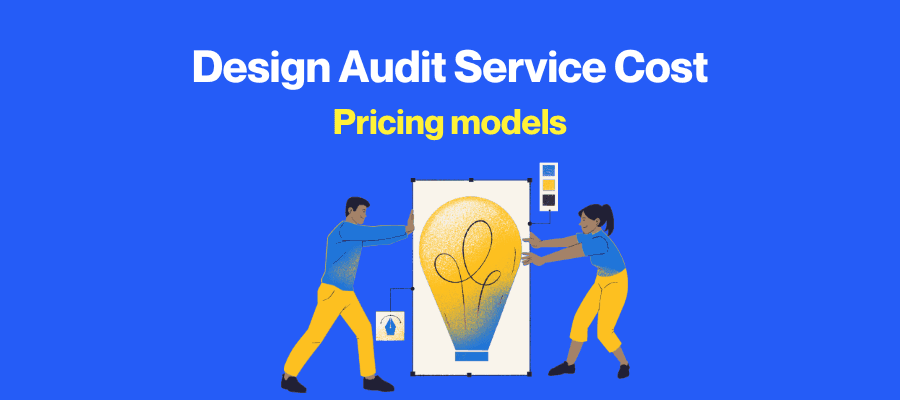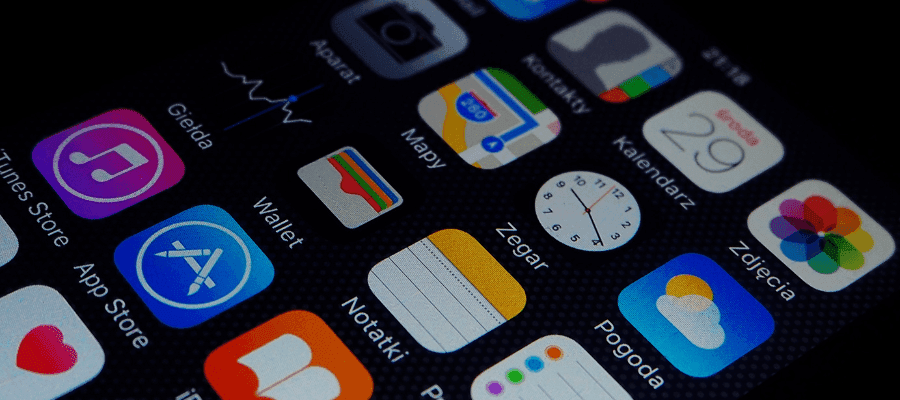PPC Management Pricing: How Much Does PPC Management Cost?
Share
Share
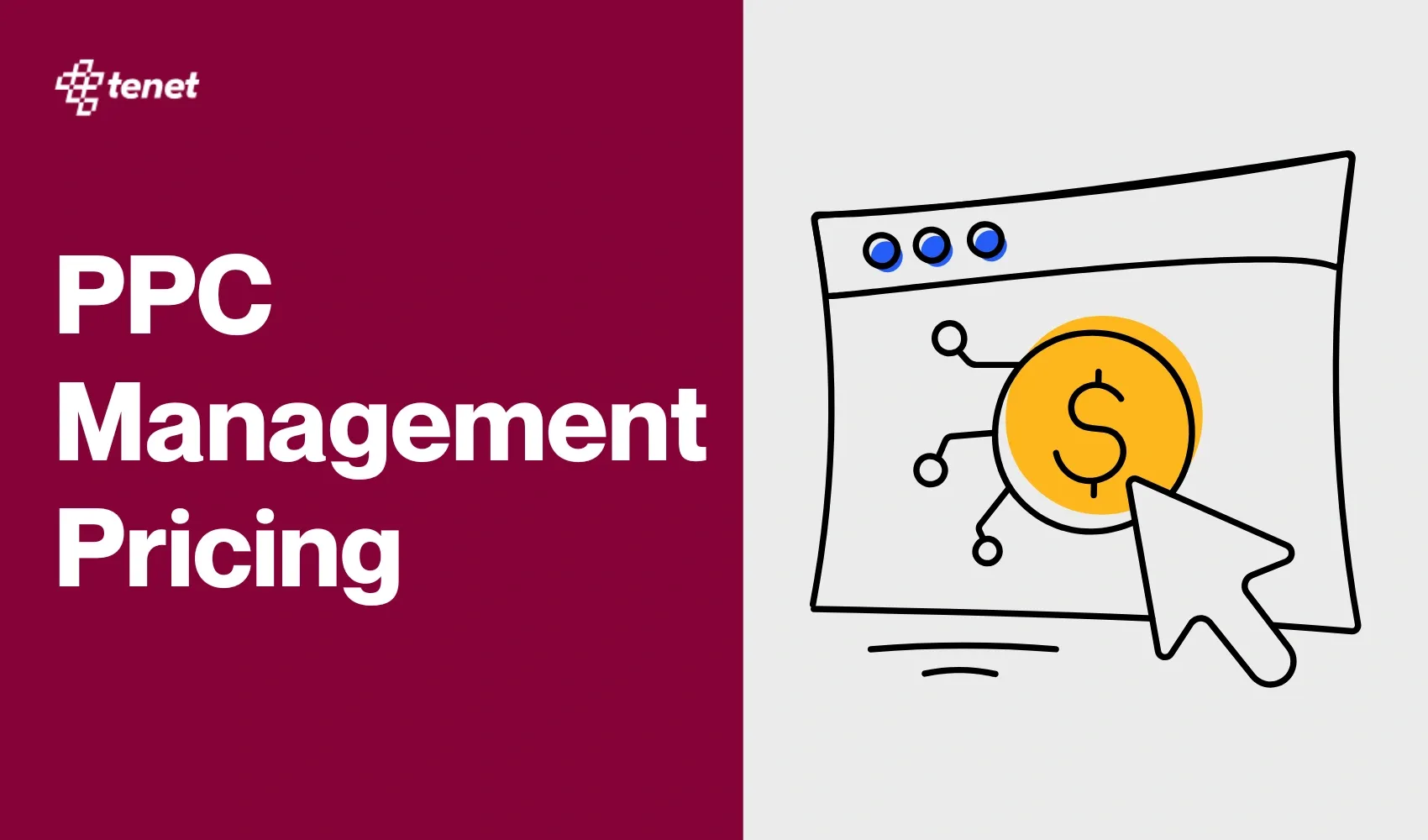
Curious how much PPC really costs in 2025—or which ad type fits your business best?
This guide breaks down real ad costs, agency pricing models, and the pros and cons of each.
Whether you're comparing PPC management pricing models, calculating budgets, or choosing between hourly vs. value-based pricing, you’ll find everything here— backed by real data and hands-on experience managing 300+ PPC campaigns.
How much does Pay-Per-Click management cost in 2025?
The average PPC costs range between $500 - $10,000 per month. Most businesses spend around $0.11-$0.50 per click and $0.51-$1.00 per 1000 impressions on platforms like Microsoft ads and Google ads.
It is important to know that these are just the averages. Consider them as an estimate spend, because your business might spend more or less depending on different factors.
Your industry, type of PPC services, the chosen ad network, and whether you are doing it in-house or hiring an agency make the difference in the final spending.
Let’s understand the breakdown of the PPC costs:
As of 2024, small to mid-sized businesses spent around $6,000-$10,000 per month in PPC campaigns. Businesses across industries earn $2 in revenue from every $1 spent on Google Ads.
The 2:1 ROI ratio indicates that businesses are doubling their ad spend in revenue.
👉 Looking for expert level PPC management help for your campaigns?
Explore our services in different countries:
What is the average CPC in your industry? PPC cost benchmarks across 10 major industries
PPC advertising costs vary widely by industry, with legal services and home improvement topping the charts for average cost per click (CPC).
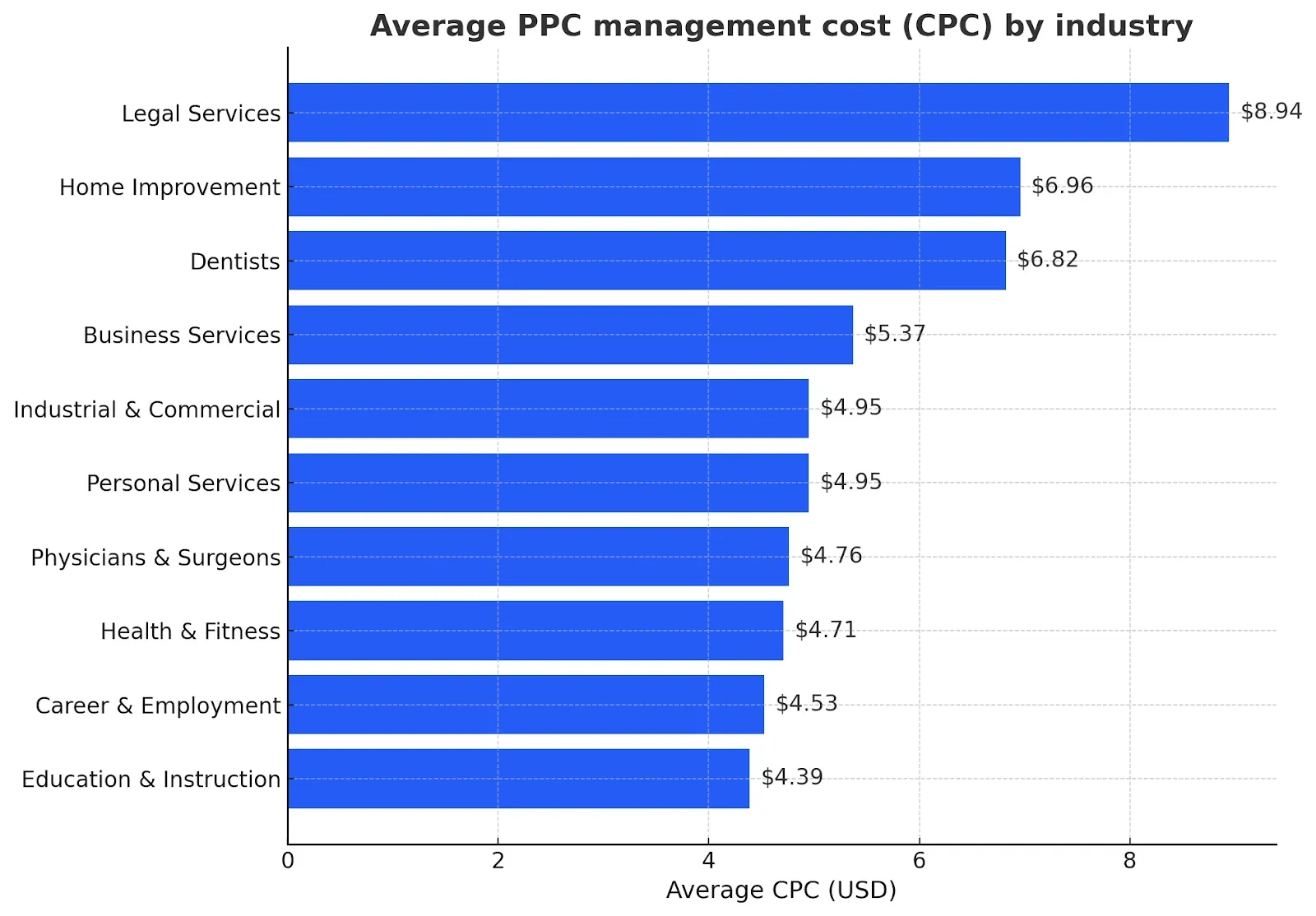
Here’s the full data breakdown (source: Wordstream)
This data helps marketers set realistic budgets and benchmark their ad spend.
Use this breakdown to understand how competitive your niche is on Google Ads in 2025.
Types of PPC services and their pricing
There are eight different types of PPC services, and let’s understand them to see which one you can use to let the leads reach you:
1. Paid Search Ads

Paid search ads appear at the top or bottom of Google’s search results. You’ll notice them marked with a small “Ad” tag. These ads are triggered by specific keywords that users type into Google.
For example, if someone searches “affordable refrigerator repair near me,” and you’ve added that keyword to your campaign, your ad can show up.
- Why it works: These ads reach people who are already looking for something you offer — meaning high intent.
- Average Cost-Per-Click (CPC) for paid search ads: $1 to $4 (can be higher in competitive industries like legal or finance)
Use search ads when:
- You're targeting high-intent users actively searching for your product/service
- Your keywords have a clear commercial or transactional intent
- You need quick traffic and visibility on Google SERPs
- You have a fast, conversion-optimized landing page ready
Avoid If:
- Your target keywords have very high CPCs and limited budget
- You don’t have a proper keyword list or bidding strategy
2. Display Ads

Display ads are visual PPC ads — usually image banners — that show up on websites your target audience visits. These are part of the Google Display Network (GDN), which includes millions of websites and apps.
If someone visits a blog about fitness, and you sell protein bars, your ad can show up on that blog — grabbing attention when they’re not actively searching.
- Why it works: It increases your brand visibility and can drive traffic through eye-catching visuals.
- Average CPC for display ads: $0.30 to $1.50
Use display ads when:
- You want to build brand awareness or stay top-of-mind
- You have strong creatives like banners, graphics, or videos
- Your audience spends time on blogs, news, or niche sites
- You’re running promotions or visual campaigns
Avoid If:
- You don’t have visually engaging creatives or branding assets
- You’re focused only on bottom-of-funnel conversions
- Your budget is small and performance tracking is a priority
👉 Calculate your CPC ($) with our free online CPC calculator
3. Social Media Ads

These ads run on platforms like Facebook, Instagram, LinkedIn, Twitter, and Pinterest. They blend into the user’s feed and can be highly customized based on age, location, behavior, job title, and even interests.
You can promote a post, direct people to your website, or collect leads directly from the platform.
- Why it works: You can reach very specific audiences with creative formats like carousels, videos, and stories.
- Average CPC for social media ads: $0.50 to $2.00 (can vary widely by platform and audience)
Use social media ads when:
- Your audience is active on platforms like Facebook, Instagram, or LinkedIn
- You have visually compelling ad creatives and videos
- You want to target specific interests, behaviors, or demographics
- You’re promoting offers, events, or content
Avoid If:
- Your audience is not active on social media
- Your targeting data is unclear or outdated
- You lack design assets and don’t plan to update creatives regularly
4. Remarketing Ads
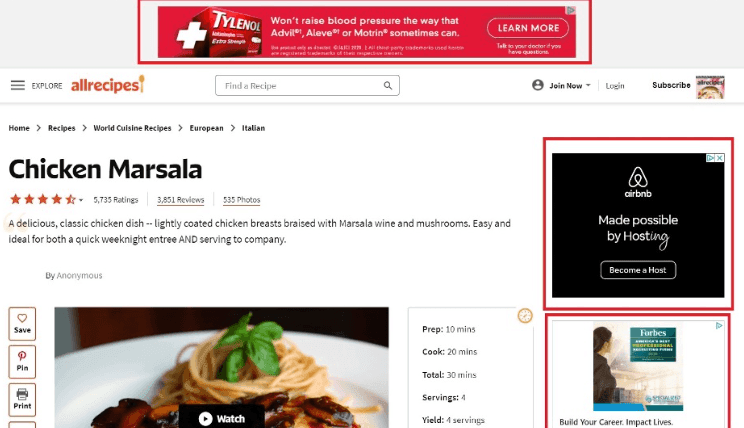
These ads follow people around the web after they’ve visited your website. Maybe they added something to the cart but didn’t check out — these ads help you bring them back.
They show on websites, mobile apps, and even YouTube, reminding users about your product or service.
- Why it works: People often need multiple touchpoints before buying. Remarketing keeps your brand top-of-mind.
- Average CPC for remarketing ads: $0.25 to $1.50
Use remarketing ads when:
- You get traffic but not enough conversions
- Visitors abandon carts, forms, or key product pages
- You want to stay visible and re-engage potential customers
- Your brand has a long consideration cycle
Avoid If:
- You have low traffic volume (not enough to retarget)
- You lack segmented visitor data or tracking pixels
- Your ads aren’t customized for returning users
5. Google Shopping Ads
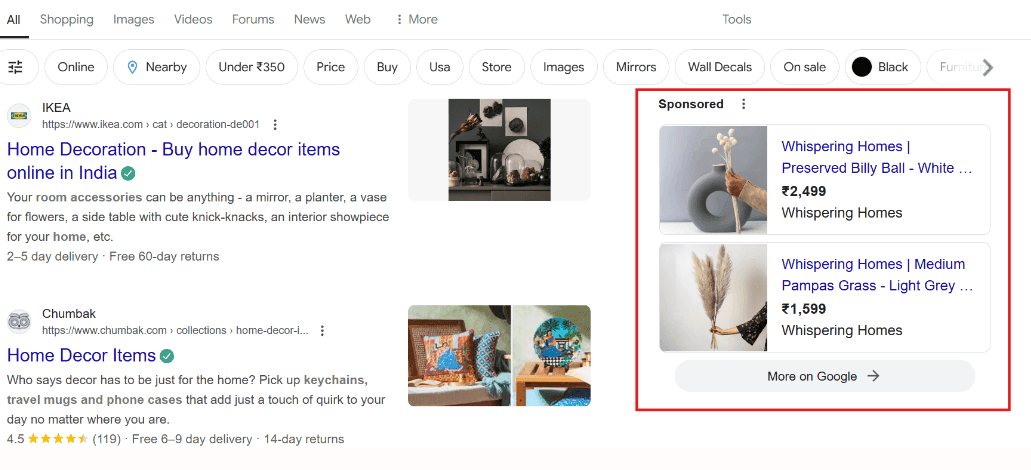
Shopping ads are product-based ads that show up in a carousel format above or beside search results. They display the product image, name, price, and store name.
For example, someone searching for “wireless headphones” will see a scrollable list of headphones with prices and pictures.
- Why it works: Customers see the product and price upfront — which means they only click if they’re already interested. This makes the traffic more qualified.
- Average CPC for shopping ads: $0.50 to $2.00
Use shopping ads when:
- You run an eCommerce business with physical products
- You want users to see your product image, price, and details before clicking
- You’re targeting comparison shoppers actively looking for similar items
- Your product feed is optimized and regularly updated
Avoid If:
- You sell services instead of products
- Your product images or descriptions are poor or incomplete
- You can’t handle dynamic pricing or real-time inventory updates
6. Local Service Ads
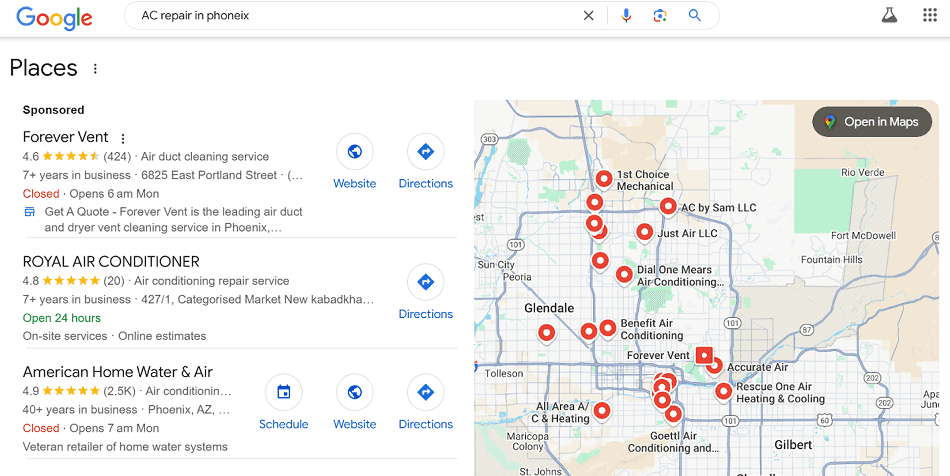
Local search ads are available only to certain businesses like plumbers, electricians, locksmiths, HVAC technicians, and similar services.
They show up when people search for services in a specific area — like “plumber in Bangalore” — and display local businesses with ratings, hours, and a “Google Guaranteed” badge.
- Why it works: You only pay when a customer contacts you (pay-per-lead model), not for clicks.
- Average Cost Per Lead for local ads: $6 to $30
Use local ads when:
- You offer home or local services (e.g., plumbing, locksmith, HVAC)
- You want to attract nearby customers in specific cities or neighborhoods
- You have a Google Business Profile and verified local listings
- You want leads on a pay-per-lead basis, not per click
Avoid If:
- You don’t operate in a specific geographic region
- Your business type isn’t eligible for local service ads
- You don’t have a verified Google profile or trust elements
7. Gmail Sponsered Ads
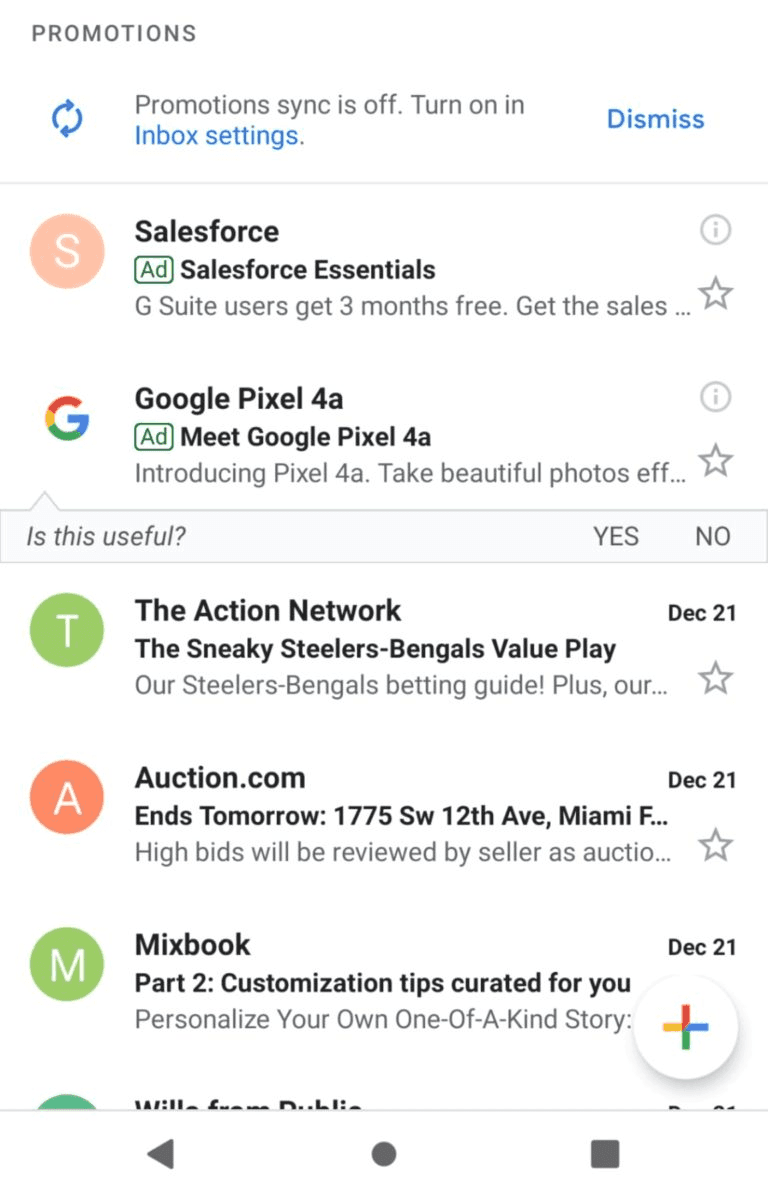
Gmail ads appear inside users' Gmail accounts, specifically in the Promotions tab. They look like regular emails but are marked as “Sponsored.”
When someone clicks, the ad expands like an email and can include images, text, and a CTA. These are great for product announcements or exclusive offers.
- Why it works: You’re reaching people in a more personal space — their inbox.
- Average CPC for Gmail ads: $0.10 to $1.00
Use Gmail ads When:
- You want to reach users directly inside Gmail
- You’re running a promotion, discount, or content campaign
- You have a strong email-style headline and offer
- You want to target affinity or in-market audiences
Avoid If:
- You don’t have engaging subject lines or ad copy
- Your audience doesn’t use Gmail or webmail regularly
- You rely on visuals over text-based ad formats
8. Instream Ads
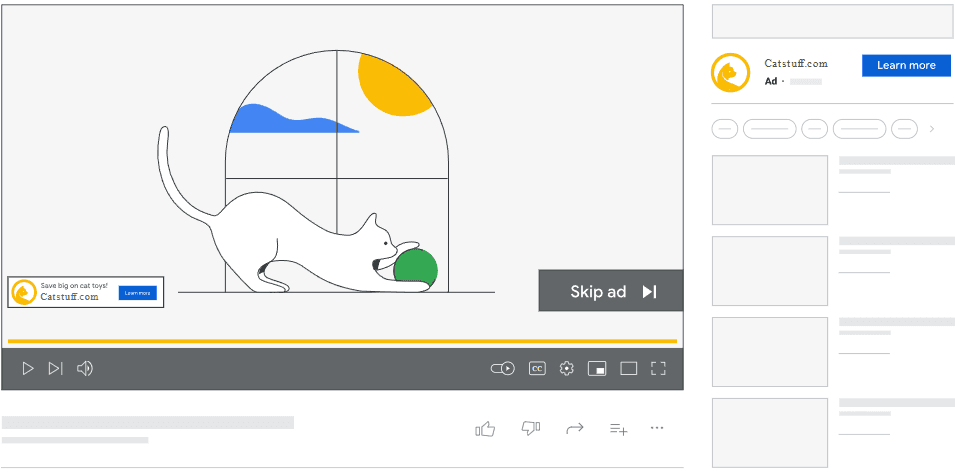
Instream ads are video ads that play before, during, or after YouTube videos. Some are skippable, some are not. You can also run small overlay or sidebar ads.
With over 120 million daily users, YouTube gives you massive reach. The key is to make the first 5 seconds of your ad grab attention.
- Why it works: Video is one of the most engaging formats, and people often remember what they see and hear.
- Average Cost Per View (CPV) for instream ads: $0.05 to $0.30
- Good for: Brand awareness, product launches, explainer videos, and customer testimonials
Use instream ads when:
- You have video content to promote your brand, product, or story
- Your target audience consumes video regularly
- You’re running top-of-funnel awareness or storytelling campaigns
- You can test skippable, bumper, and non-skippable formats
Avoid If:
- You don’t have quality video content
- Your message is complex and doesn’t fit short formats
- Your audience doesn’t engage with video content
What Factors Affect PPC Costs?
The cost of running a PPC campaign isn’t fixed. It depends on multiple variables that influence how much you pay per click and how efficiently your ad budget is spent.
Below are the five most important factors that impact your PPC costs— with examples and clarity on cost impact.
1. Keyword Competition
What it means:
When multiple advertisers bid on the same keyword, competition increases, and so does the cost-per-click (CPC). The more valuable or commercial a keyword is, the more advertisers want it—and that drives up the price.
Example:
A keyword like “buy CRM software” may cost over $40 per click, while something like “simple CRM definition” may cost only $2. The first keyword signals a buyer ready to act, which attracts more advertisers.
Tip:
Use tools like SEMRush or Google Keyword Planner to identify high-volume, low-competition keywords.

Also, focus on long-tail keywords like “affordable CRM tool for small teams,” which often have lower CPC but stronger intent.
Impact on Cost:
✅ High competition → higher CPC
✅ Low competition → lower CPC
2. Google Ads Quality Score
What it means:
Google assigns a Quality Score (1 to 10) to each of your keywords and ads. This score is based on:
- Expected CTR – Will users likely click on your ad?
- Ad Relevance – Is the ad relevant to the keyword?
- Landing Page Experience – Does the page deliver value and match user expectations?
A high Quality Score can reduce your CPC and improve your ad position, while a low score can increase costs—even if your bid is high.
Example:
Two advertisers bid on the keyword “graphic design agency.” One has a well-written ad and optimized landing page, earning a Quality Score of 8, while the other scores a 5. Even with a lower bid, the first advertiser will likely appear higher and pay less per click.
Impact on Cost:
✅ High score → lower CPC
✅ Low score → higher CPC
3. Ad Placement (Position on Page)
What it means:
Where your ad shows up on the search results page affects both cost and performance. Ads in the top 3 positions typically get the most clicks but also come at a premium price. Ads at the bottom or on subsequent pages may cost less but attract fewer clicks.
Example:
A home cleaning service bidding for “house cleaning Dubai” may pay ₹25 per click to appear at the top, while a lower-position ad might cost only ₹10, but generate far fewer leads.
Tip:
Test different placements and evaluate not just clicks, but conversion rates. Sometimes, a lower-cost position delivers better ROI.
Impact on Cost:
✅ Top positions → higher CPC
✅ Lower positions → lower CPC (but may reduce traffic)
4. Targeting Options (Audience, Location, Device)
What it means:
Your targeting choices—who sees your ad and where—can greatly impact cost.
- Geography: Ads in competitive metro areas or high-income regions typically cost more.
- Devices: Mobile ads may have different CPCs compared to desktop.
- Audience Type: Broad targeting often lowers CPC, while narrow custom audiences or remarketing lists can raise it.
Example:
A fitness app targeting “New York City professionals” will pay more per click than the same ad targeting a smaller city like Des Moines, Iowa. Similarly, retargeting website visitors may cost more per click but can significantly boost conversions.
Impact on Cost:
✅ Tight targeting → may increase CPC
✅ Broad targeting or non-competitive regions → may reduce CPC
PPC cost and pricing models
Agencies use different pricing structures depending on project size, goals, and engagement style.
Here are the three most common PPC pricing models explained:
💼 Project-Based (Fixed Pricing)
How it works:
You and the agency agree on a fixed fee for the entire campaign or a specific set of deliverables—such as campaign setup, ad creation, and landing page design. This amount stays the same regardless of actual time spent or ad performance.
Best for: Businesses with defined timelines, goals, and limited scope.
Typical cost: $1,000 – $10,000+
⏱ Hourly Pricing
How it works:
You’re billed based on the number of hours the agency spends on your account. Time is tracked using hour-logging tools, and you pay only for the time used—whether it’s for strategy, setup, reporting, or optimization tasks.
Best for: Short-term projects or businesses wanting more control over budget and task management.
Typical cost: $50 – $300+ per hour
💰 Value-Based Pricing
How it works:
In this model, pricing is tied to the value delivered—such as leads generated, revenue impact, or ROI. The agency charges based on the results and quality of performance, rather than just hours worked or CPC. This model aligns both parties toward growth and success.
Best for: Companies focused on acquiring high-value customers and willing to pay more for measurable outcomes.
Typical cost: $5,000 – $50,000+
Still not sure? Use the following decision flowchart to select the right PPC management pricing model for you:
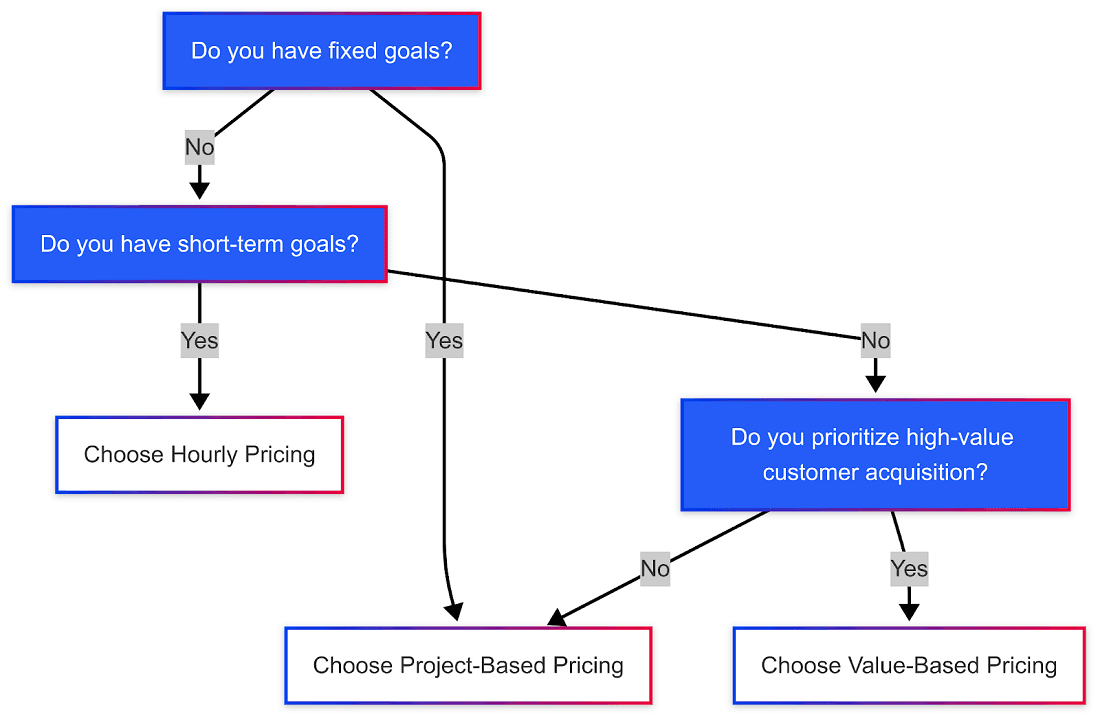
PPC cost calculator
To calculate the PPC cost, you will need solid numbers on the following metrics:
- Number of customers: minimum number of customers to visit your site or view the ad
- Revenue: Revenue target for the campaign (depends on sales period, so it can be monthly or quarterly)
- Average sale per customer: Average sales per customer associated with the product or service highlighted in the campaign to establish a proper target customer count.
With these values, you have first to calculate the number of customers (NoC) to meet your target using the following formula:
NoC = [Revenue Target/Number of Sales Period Campaign Will Run/Average Sale per Customer
Then, here’s the formula to calculate the PPC budget:
PPC Budget = [(Number of Customers/Sales Team Conversion Rate) / Website Conversion Rate ] x CPC
While the above method might seem time-consuming, this approach helps in allocating budget as per your company size. If this calculation looks laborious to you, then you can fill out the following form to get a correct estimate within 24 hours and a clear timeline.
Why choose Tenet for developing your custom PPC?
The expertise and experience of the PPC agency play an integral role in determining the success of your PPC advertising campaigns.
At Tenet, we are a team of 30+ professionals that strategically plan every phase of your PPC campaigns that maximize your ROI. Every dollar that you spend on your ads, we ensure that it drives measurable growth of your business.
We have catered to over 400+ projects and boast a client satisfaction rate of 98% and a retention rate of 46%. We build adaptive strategies that are designed to handle the uncertainties of an unpredictable market.
Frequently Asked Questions
1. How much does PPC management cost in 2025?
PPC management costs in 2025 can range from $500 to $10,000+ per month, depending on your goals, industry, and ad spend. Most agencies charge 12%–30% of your monthly ad budget. The average PPC management pricing also includes tools, reporting, and strategy— so it’s not just about clicks, but about smart management.
2. What’s the average cost for PPC management services?
The average cost for PPC management falls between $1,000 and $3,000/month for small to mid-sized businesses. This usually covers PPC campaign setup, keyword research, ad optimization, and reporting. When reviewing PPC services pricing, always check what’s included in the monthly fee.
3. How much do PPC agencies charge?
Most PPC agencies charge either a flat monthly fee, a percentage of ad spend, or performance-based pricing. On average, PPC agency pricing ranges from $500 to $5,000/month, but high-growth campaigns or competitive industries can go higher. The PPC management fees vary based on scope, reporting, and creative work involved.
4. What factors affect PPC costs?
PPC costs are influenced by your industry, competition, keywords, geographic targeting, and ad quality score. Highly competitive niches like finance or legal can push CPCs above $10. While average PPC costs are between $1–$2 per click, high-performing keywords in tough markets can cost more. Smart targeting and optimization help reduce spend.
5. How much should I charge for PPC management as a freelancer?
If you're a freelancer, you can charge anywhere from $300 to $1,500/month or $50 to $150 per hour, depending on your experience and results. Ask yourself: what value am I providing? Clients looking at how much to charge for PPC management often base rates on top queries, clicks, and ROI performance.
6. Is there a standard PPC pricing model?
No, but common models include hourly rates, flat monthly fees, and value-based pricing. When choosing a structure, consider PPC management costs, campaign complexity, and performance tracking. Businesses often compare PPC management cost UK vs US, or by agency size, to decide which model suits them.
7. What’s included in PPC management services pricing?
PPC management services pricing often includes keyword research, ad copywriting, A/B testing, landing page reviews, campaign monitoring, and monthly reporting. The actual PPC management price may also cover software tools, strategy sessions, and ongoing optimizations.
8. How do I know if I’m overpaying for PPC services?
Look at your campaign’s click-through rate, impressions, average position, and cost per conversion. If your PPC campaign management pricing seems high but you’re not seeing results, it may be time to audit performance. Transparent reporting is key to understanding whether your PPC costs are justified.
Expertise Delivered Straight to Your Inbox
Expertise Delivered Straight to Your Inbox

Got an idea on your mind?
We’d love to hear about your brand, your visions, current challenges, even if you’re not sure what your next step is.
Let’s talk
